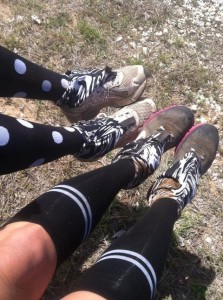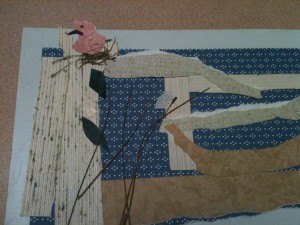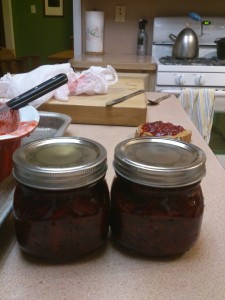Overheard in the Wolfe House #232
Sam (yawning)
Peggy: Sounds like bedtime
Sam: Sounds like lack of oxygen
Treatment and prevention, or blue-washing?
I don’t think we, as a nation of educated people, as a country of incredible resources, as a culture, as the ostensible leader of the so-called free world, are very good at fixing problems. Many problems we had when I was a young woman are still around. Some have gotten worse.
We think we’ve made progress because we talk about our problems. Families get support in the community to raise their kids with autism, instead of quietly sending them away to an institution. Women get breast exams and mammograms instead of being embarrassed to discuss concerns with their doctor. People recycle their bottles and cans instead of sending them to the landfill.
We’re being green. We’re wearing pink. We’re lighting it up blue.We’re aware.
Good things all, but they don’t have anything to do with preventing some serious and growing problems.
The occasional greenwashing we get from some environmental groups keeps us from solving problems. The Sierra Club promoted natural gas until they were against it. Can you imagine where we would be now if they, the Natural Resources Defense Council and the Environmental Defense Fund had been more worried about an ounce of prevention from renewables than that compromise for a pound of coal-powered cure?
Then there’s the Komen problem. Many have been trying to cast a brighter light on that group’s pinkwashing for a long time. All these promotional tie-ins and three-days and commercials and messages have actually confused some people into thinking that finding breast cancer early is the same as preventing it.
Uh, no. It’s time to pay for prevention. My mother had breast cancer. Let’s see what we can do to prevent my daughter from getting it.
What of this burgeoning world of autism research and advocacy? When Sam was diagnosed, we were told that he was one in 10,000 or more. Autism was rare. I didn’t know anyone else whose child had autism. Now we’re at 1 in 88. It takes more than two hands to count all the kids with autism that grew up here in the past 15-20 years in Argyle, a town of 3,000.
Aren’t you afraid? You should be afraid. I am. You should be very afraid. Your-stomach-up-in-your-chest afraid.
People who want to help are trying. (And if you know what the day-in-the-life for families of kids with autism is like, finding time for that is its own kind of miracle.) They are raising money and advocating for more research.
When I visited the Autism Speaks website to look at the latest in research, I got kicked to pop-up page, insisting that I sign a petition about insurance before letting me land on the web page I sought.
I get that. Parents need help paying for treatment. But it was in-your-face. It was slick. It was just a little too Komen for me.
I hope it’s just because they have some really good people working for them. I hope they don’t get lost. I hope we aren’t in for a generation of blue-washing.
No amount of blue light bulbs you buy at Lowe’s is going to light this darkness.
We need prevention, and we need it now.
Overheard in the Wolfe House #231
Peggy (seeing Sam resting his head on the back of a chair after a long search for his dress shirt): There are a lot of people in the house. It’s a little chaotic.
Sam: Yes. It’s nice.
Overheard in the Wolfe House #230
Sam (after changing a rear brake light bulb and picking up a dead AA battery he found in the trunk of his car): So, can the dead grasshopper stay?
Peggy (having just picked up a petrified strawberry from said trunk): Yeah.
Overheard in the Wolfe House #229
Peggy: How was work today?
Sam: Work was subtle today.
Purple joy
Always a reporter, never a source (except maybe once)
For about six months in 1997, this tapestry lay over the table in the breakfast room at our house as we worked with two other couples and a high school student to turn it from bits of amazing fabric to the beautiful design you see here.
It is one of the five large tapestries that hangs during the Easter season at our church, St. Philip the Apostle Catholic Church in Lewisville. Three are conceived as panels in the main display, two more flank the sanctuary, and a sixth, smaller tapestry drapes over the altar.
For Easter season alone, we had to have enough volunteers to make the six tapestries. Multiply that by the many seasons of the church calendar — the bold red tapestries for Ascension and Pentecost (Sam’s favorites) hang for just two weeks — and you get the sense of what a barn-raising that was.
Mark announced in 1996 that he wanted to convert, something apparently he had been quietly thinking about for years. In the early 1990s, we’d found a good church home in Sacramento, at St. Francis, during, of all things, the time when they were retrofitting the sanctuary for earthquakes and Mass was being held in the school gym. Mark said he hadn’t known such a spiritual home when he was growing up, which always made me a little sad. I know there were times as a child I didn’t get what church was about, but there were times that I did.
The first year after Mark died, I came to help switch out the tapestries between Lent and Easter. There was a team of volunteers who did it regularly and they welcomed me. Once they knew I was part of the team that stitched it together, I got peppered with questions, as if they were historians that had just stumbled upon the best primary source ever.
They had a burning question. Was is true, that one of the Easter tapestries had a bit of a parishioner’s wedding dress on it?
Yes, I said, pointing to the tapestry that we had made.
Now, don’t get excited, dear Internet people, it wasn’t a piece of my wedding dress. Mark and I were such hipsters back in the day, I made our get-married-barefoot-on-the-beach-in-Kona clothes of a buttery linen. This tapestry is filled with bridal fabrics, but full of shiny silks and satins and sparkly lames and organzas.
Two Dominican nuns designed the work and set up all the volunteers with the patterns and fabrics needed. They included a little extra for errors.
Our team didn’t quite cut all the fabric at once, which we maybe should have, but we were also worried about losing track of some pieces. By the time we came to the very last piece, there wasn’t quite enough of the creamy white, rich brocade the sisters intended. We nearly panicked. No matter which way we turned the piece of remaining fabric and pattern, we couldn’t make it work.
Marcy, one of the volunteers, studied it closely. “It looks like my wedding dress. I bet I have enough fabric left,” she said. We were stunned when she brought the piece the next week. It was almost a dead ringer for what the sisters had given us to use.
We decided to sew it on and tell the sisters later. They thought it was a great solution, but the story still turned into church folklore. As my friend, Donna Fielder says, now that I am too old to die young, I see that’s what people do with certain stories.
Each Easter season, I get a little misty when I see this tapestry, knowing that Mark’s signature is on the back with mine and that of our friends and knowing the year the tapestry was started was the year he was welcomed into the church.
Random thoughts from the Possum Kingdom 20K
Running 4.5 hours of a 20K equals 17 miles, plus or minus. This proves that lesson from my parents that there’s a price to pay when you don’t think for yourself and just follow the guy in front of you. (But it did make up for the marked-too-short Easter 5K in Cowtown.) The wildflowers were many and the trail was varied, if you consider alternating between sand, rock and hills varied. The air was fresh and clear. Once it was filled the sweet, tangy smell of just-made cedar chips. Another time a smokey smell wafted our way, and then we realized it was just medicinal. Some runners wore “For Boston 4-15-13” shirts. When I got home, I started a batch of kolaches. And, let me say this: compression socks. 
UPDATE: On the way home from Possum Kingdom, we saw a dad helping his kid fly a kite. It was a great day for kite-flying and I remembered this video Mark shot with the kids one day not long after we moved here. Susan said kite-flying is a dad thing.
Again, this is something Paige rescued from the nearly magnetized tapes so it isn’t the best quality, but it’s nice to hear Mark’s voice. If you can hang out til the end, both bugs and more tennis shoes make it on screen.
College for Kids
I’m wondering how many Denton old-timers remember that Texas Woman’s University used to offer “College for Kids,” a summer enrichment program for elementary school children.
All the Wolfe children went every summer for as long as they were eligible. Kids “aged out” in middle school. One of the organizers told me that was because middle school was about the age that kids would start finding ways to get into trouble.
As far as I can tell, the program ended rather unceremoniously in 2002. I don’t know if the people who ran it just ran out of steam or if the kids started “aging out” a little sooner.
Sam went as soon as he was old enough and he went every summer. The first summer we worked closely with the organizers to make sure Sam didn’t get lost going from building to building. After all, he was only a rising 4th grader! We took advantage of several quiet evenings on campus, the week before it started, to practice finding his classes. He did well, only getting lost once, on the first day, (there were four classes to find) and the staff helped him make it right.
The program helped Sam develop some independence and think about school in different ways. They had all kinds of fun classes in topics like rockets and printmaking and magic-making and video production.
Here’s what remains from the video production class. Paige rescued what she could from the copy we had that was getting magnetized.
Sam and Michael liked the magic class so much I’m pretty sure each of them took it more than once.
In one class, Sam learned to write music. I was surprised when he came home at the end of that session with this:
It was and is a sweet little tune.
When I unearthed recently, I put it up on the piano and tried harmonizing it very simply. I asked Sam, did I come close to what he imagined? He told me that’s the sort of thing that he thought musicians should be able to arrange and produce how they want.
I’ve often wondered how much guidance the teachers provided with such projects. Paige was 4 or 5 years old the last time we went to Bear Valley Music Festival. She and Michael participated in a summer art program at the little library that had them making collages with wallpaper samples and objects they found on nature walks.
Paige’s piece took my breath away, with the little bird in a nest perching above the boundaries of her collage. Did the teacher do that or Paige?
I’ll never know.
Rainbow toast and sunshine strawberry jam
Sam limited his food choices when he was in elementary and middle school. Sometimes we took action, but otherwise we tried to keep a good humor about it.
I can remember taking the kids out for breakfast, usually when we were on the road, and as the rest of us were all scarfing down pancakes and eggs and grits and bacon and sausage, Sam would be opening a fun pack of cereal and spreading jam on an order of dry toast.
He expanded his food universe by trying all different kinds of jam. He settled into a routine where he would spread each piece of toast with all the jams at the table equally. Sometimes that could be four or five different flavors. When that happened, he called it rainbow toast.
Some of those pieces of toast became real works of art, kind of like that cool stuff baristas can do designing hearts or flowers or conifer trees in the foamy milk in your coffee.
He doesn’t do that anymore, but he hasn’t lost his appreciation for a good jelly or jam.
For a long time, I just made the classics, like grape and blueberry. Lately, I’ve been trying new combinations, like strawberry-rhubarb with ginger, and apple-tequila. He likes them for the most part. The prickly pear jelly was a bust, as far as he was concerned, and he doesn’t like the butters — so things I can do with figs and pears, he just passes on.
Today, we finished the “sunshine” strawberry jam. I got the recipe from Jamison and Jamison’s “A Real American Breakfast.” This is not a recipe where the list of ingredients tells you much. You have to read what they tell you. It’s an old recipe. I’d been wanting to make it for a very long time, even before I wrote this story.
After the first day in the sun, Sam said, “It smells great.” After the third day, Sam said the flavor was intense.
Yep. Sunshine in a jar. Rainbows on your toast. This recipe is going in the regular rotation.
UPDATE:
Because Tom Reedy wants the recipe:
2 pounds strawberries
2 to 3 cups sugar
2 to 3 tablespoons fresh lemon juice
Make sure you and your utensils are scrupulously clean. Discard berries that are bruised or otherwise ailing. Stem the berries and halve them, cutting out any cottony white cores. This can easily eliminate 1/2 pound of the berries. Weigh the berries and combine them with 3/4 cup sugar per 1/2 pound of berries. (Really, truly, I say, weigh them with your kitchen scale; no guessing.) Mash lightly with a potato masher or pastry blender until you have a goopy strawberry soup of sorts, a thick liquid with small but distinct berry segments (These segments are rather toothsome when the jam is done, so, I say, think about that when you stop mashing and decide if the bits are small enough for you.)
Pour into a shallow dish (I poured it into two ceramic baking dishes so it was no more than 1-inch deep.) Cover with cheesecloth secured with rubber bands. (This is Texas, cover it with a double layer.) Set out in the sun for the day. Bring back inside and refrigerate overnight and repeat the following day. If you live in a warm, dry, sunny climate, you’ll probably have jam by the end of the second day without doing another thing (The Jamison’s live in N.M., so I’ll bet they do.) In a more humid or cloud-covered setting, it will likely take another full day of sitting out (and overnight refrigeration) to get the proper gelled texture, less thick than commercial versions, but with definite body. It will help speed the evaporation if you stir the jam a time or two during the day. If rain is anticipated, leave the jam in the refrigerator rather than putting it out. (We had rain at the end of the third day, but by then the jam was done. Sam brought it in.)
When the jam is ready, sterilize 2 half-pint (1-cup) canning jars. (I had enough jam to fill two-cup jars, as you can see). Spoon the jam in the jars, leaving about 1/4 inch of headspace and refrigerate for up to several weeks. Freeze for longer storage.
Credit: Jamison, Cheryl Alters and Jamison, Bill. “Real American Breakfast.” New York: William Morrow, p. 404


